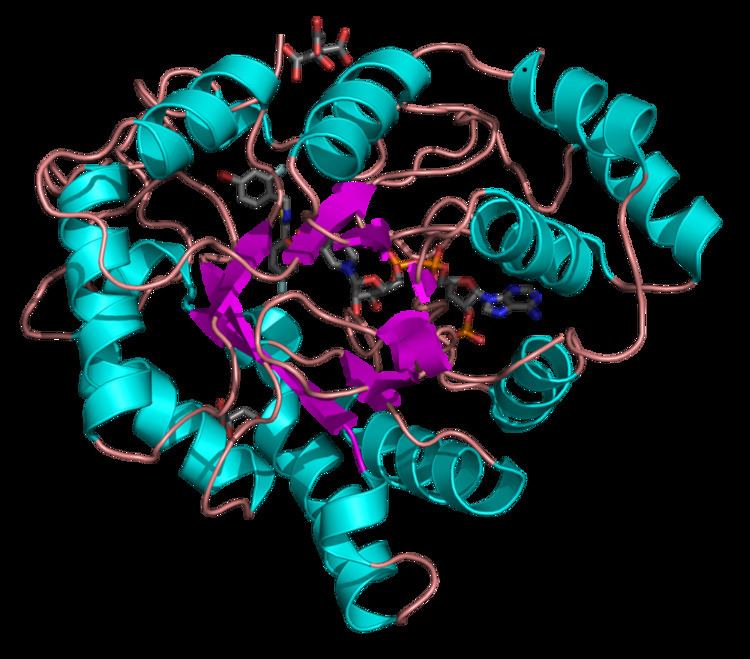Entrez 231 | Ensembl ENSG00000085662 | |
 | ||
Aliases AKR1B1, ADR, ALDR1, ALR2, AR, aldo-keto reductase family 1, member B1 (aldose reductase), aldo-keto reductase family 1 member B External IDs MGI: 1353494 HomoloGene: 133743 GeneCards: AKR1B1 | ||
Aldo-keto reductase family 1, member B1 (AKR1B1), also known as aldose reductase, is an enzyme that in humans is encoded by the AKR1B1 gene. It is a reduced nicotinamide-adenine dinucleotide phosphate (NADPH)-dependent enzyme catalyzing the reduction of various aldehydes and ketones to the corresponding alcohol. The involvement in oxidative stress diseases, cell signal transduction and cell proliferation process endows AKR1B1 the potential as a therapeutic target.
Contents
Gene
The AKR1B1 gene lies on the chromosome location of 7q33 and consists of 10 exons. There are a few putative pseudogenes for this gene, and one of them has been confirmed and mapped to chromosome 3.
Protein
AKR1B1 consists of 316 amino acid residues and weighs 35853Da. It does not possess the traditional dinucleotide binding fold. The way it binds NADPH differs fro other nucleotide adenine dinucleotide-dependent enzymes. The active site pocket of human aldose reductase is relatively hydrophobic, lined by seven aromatic and four other non-polar residues.
Function
AR belongs to the aldehyde-keto reductase superfamily, with a widely expression in human organs including the kidney, lens, retina, nerve, heart, placenta, brain, skeletal muscle, testis, blood vessels, lung, and liver. It is a reduced nicotinamide-adenine dinucleotide phosphate (NADPH)-dependent enzyme catalyzing the reduction of various aldehydes and ketones to the corresponding alcohol. It also participates in glucose metabolism and osmoregulation and plays a protective role against toxic aldehydes derived from lipid peroxidation and steroidogenesis.
Clinical significance
Under diabetic conditions AR converts glucose into sorbitol, which is then converted to fructose. 20466987 It has been found to play an important role in many diabetes complications such as diabetes retinopathy and renopathy. It is also involved in many oxidative stress diseases, cell signal transduction and cell proliferation process including cardiovascular disorders, sepsis, and cancer.
It has been reported that he action of AR contributes to the activation of retinal microglia, suggesting that inhibition of AR may be of a therapeutic importance to reduce inflammation associated with activation of RMG. Adapting AR inhibitors could as well prevent sepsis complications, prevent angiogenesis, ameliorate mild or asymptomatic diabetic cardiovascular autonomic neuropathy and may be a promising strategy for the treatment of endotoxemia and other ROS-induced inflammatory diseases.
Interactions
AKR1B1 has been found to interact with:
